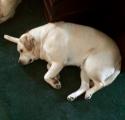I hunt the dripping tree farms of western Washington. Cloud cover is very heavy during hunting seasons. It usually rains during deer season and it always rains during elk season. The first and last hour of each day are gloomy, so legal hunting hours are far more generous than the weather and light allow.
I’m considering a scope with an illuminated reticle for use in these conditions. But a voice in my head says that a heavy duplex will do almost the same task. Shots would rarely if ever be farther than 300 yards. My average shot on game over the last 20-odd years has been about 90 yards, usually offhand because things need to happen with a quickness due to the dense brush.
What do you guys think—illuminated reticle or coarse duplex?
Thanks,
Okie John



 Reply With Quote
Reply With Quote


